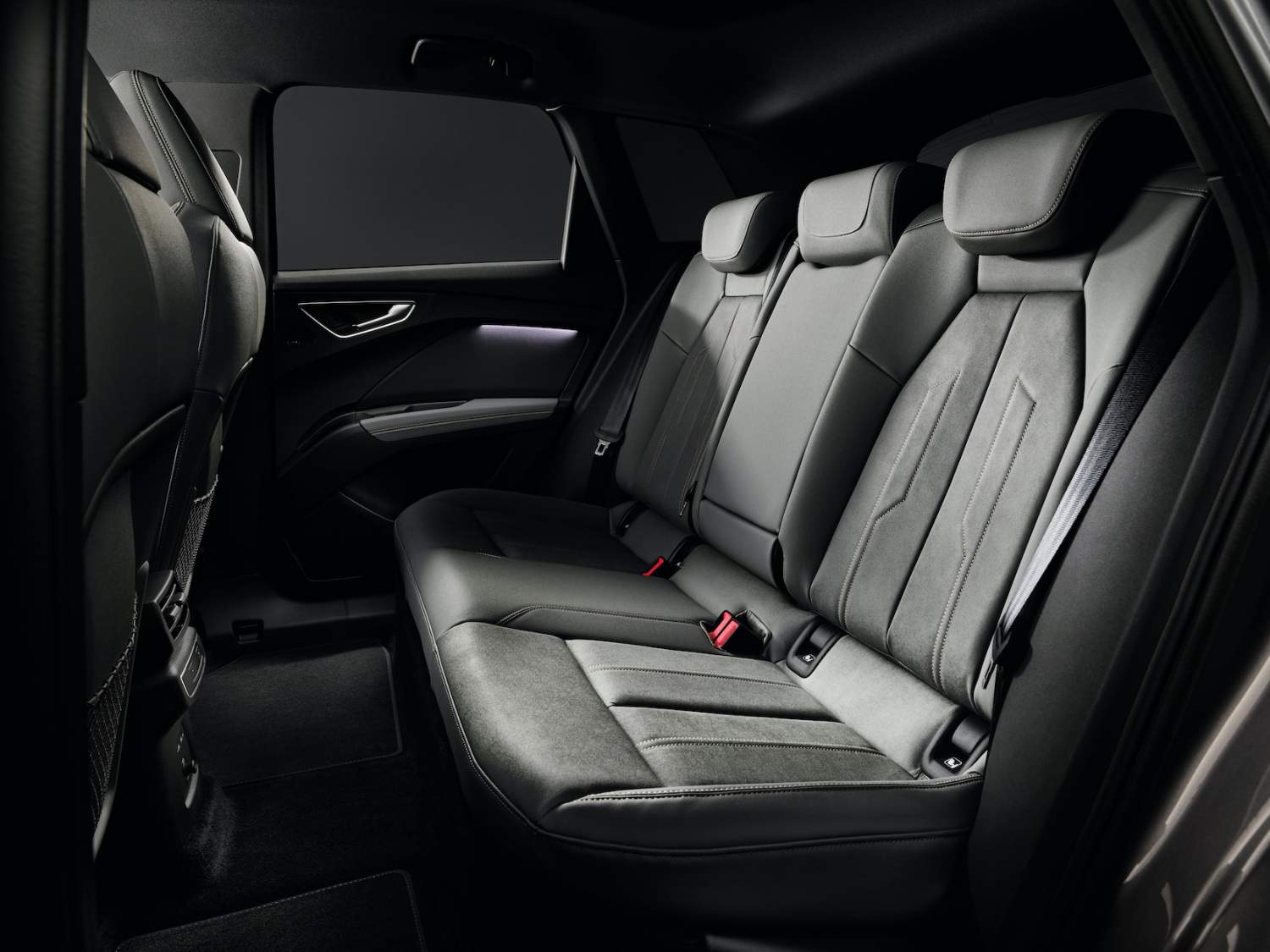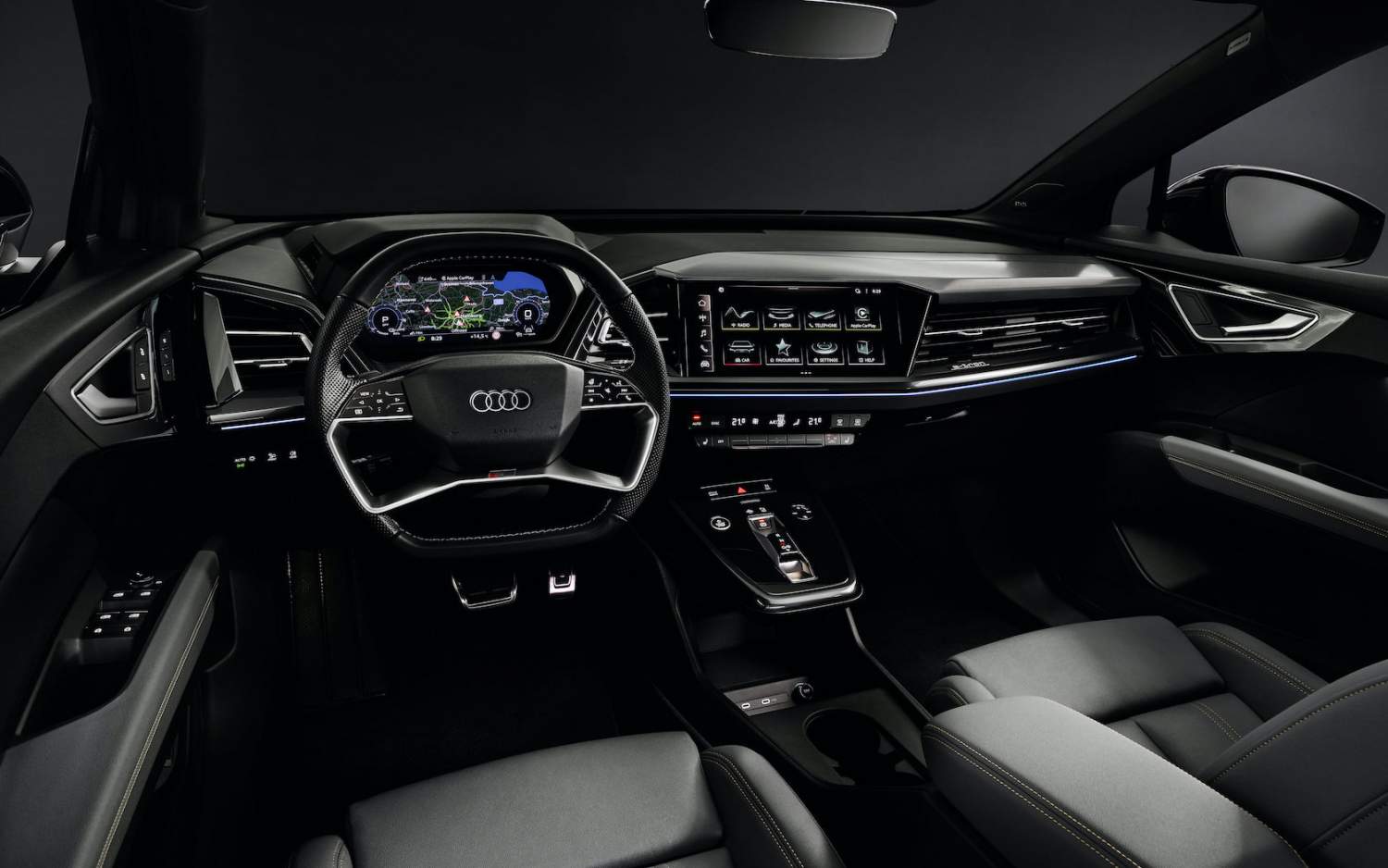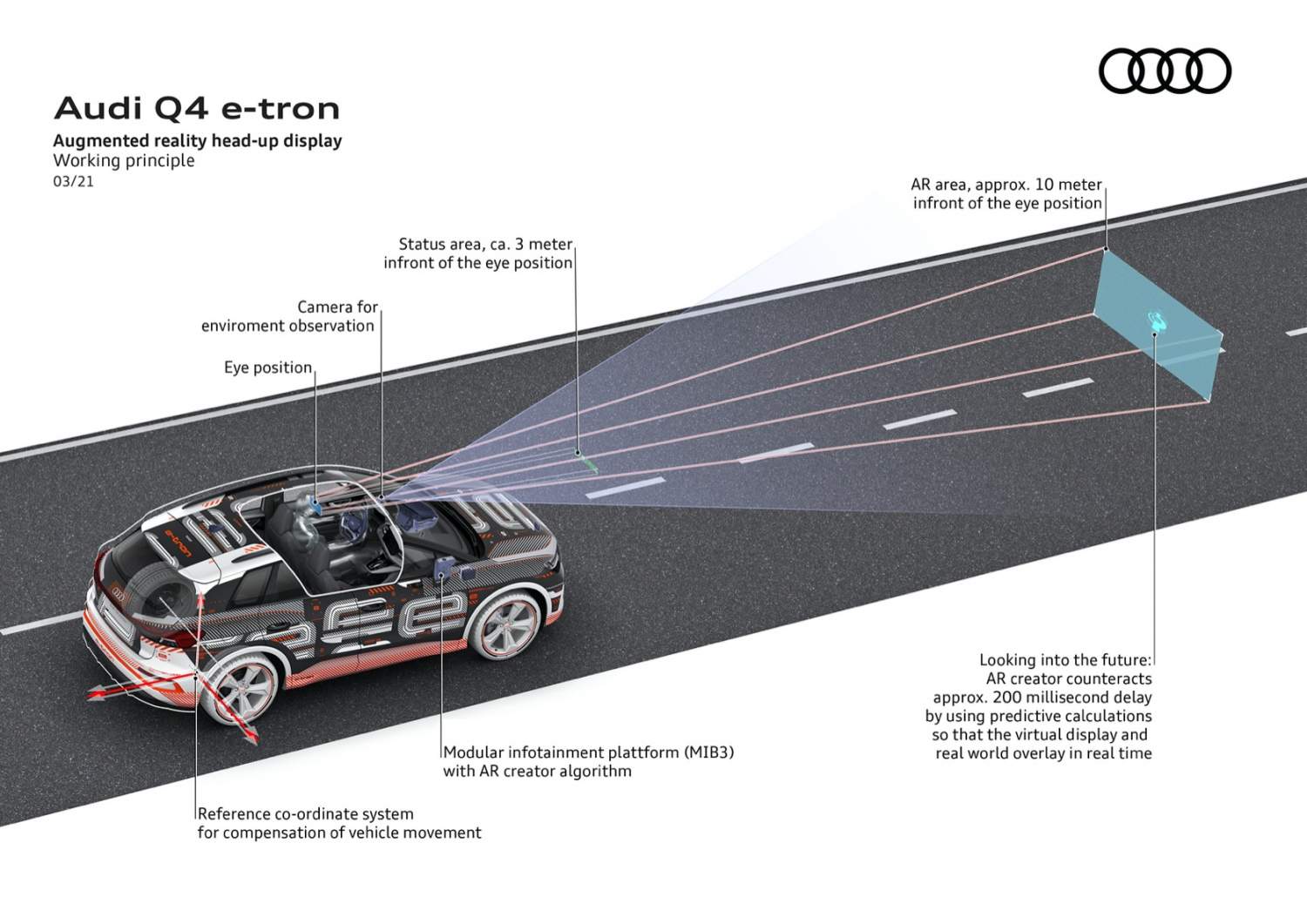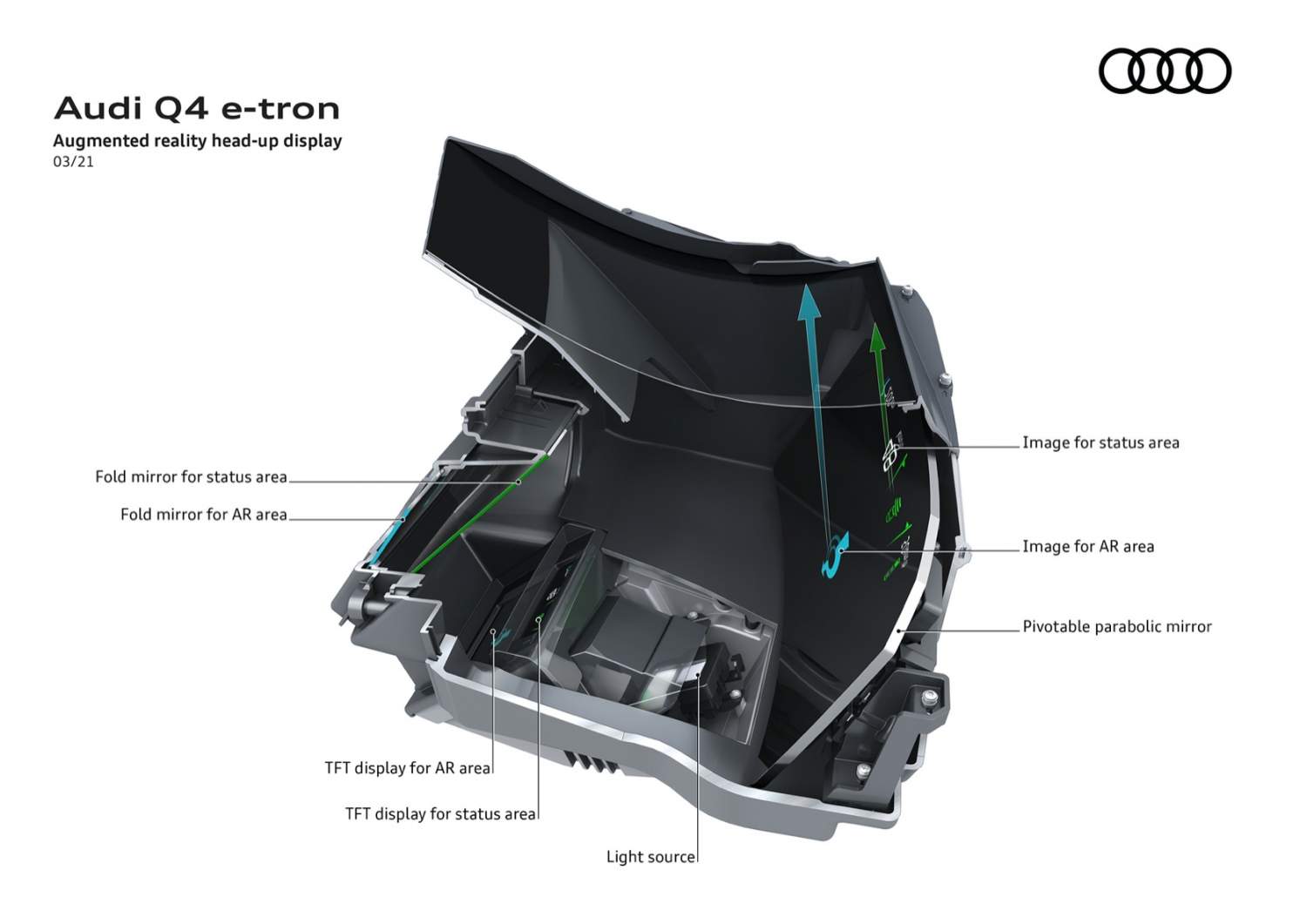The Audi Q4 E-Tron's Augmented Reality Head-Up Display Is Dashboard Genius
Audi has revealed the interior of its upcoming Q4 e-tron electric compact SUV, potentially the most important model in the automaker's new EV range, and one which includes a new augmented reality head-up display. Previewed back in early 2019 as the Q4 e-tron concept, the zero-emissions crossover promises to be Audi's most affordable e-tron so far, helping nudge the technology – and the nameplate – into far more garages.
Currently, it's fair to say that e-tron has catered for a relatively high-end segment. The first e-tron SUV and the subsequent e-tron Sportback are luxury alternatives to midsize gas and hybrid SUVs, while the recently-revealed Audi e-tron GT is a seductively-styled Sportback sedan intended to give the automaker a head-turning halo. Problem is, none of the three cars could be described as cheap.
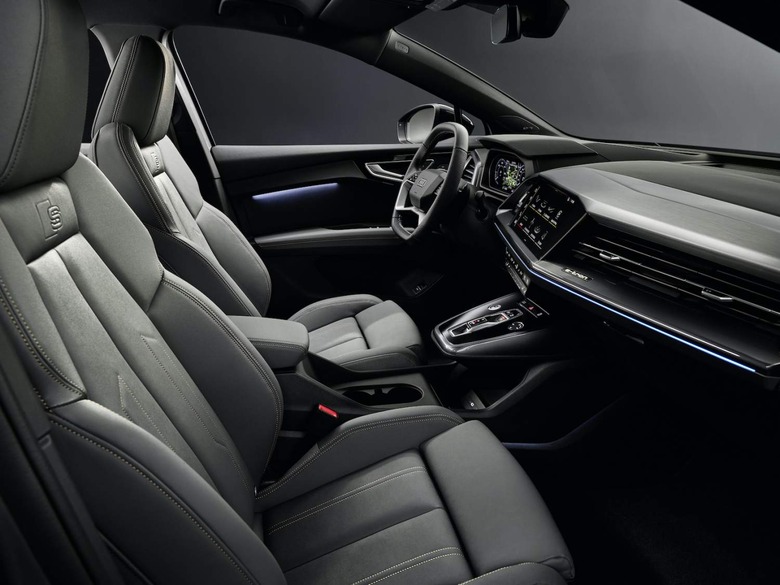
Pricing for the Audi Q4 e-tron is yet to be announced, though leaks in 2020 suggested the automaker was considering something in the region of $45,000. That would pit it more directly against rivals like Tesla's Model Y and the Polestar 2, among other EVs, when it arrives in the US later this year.
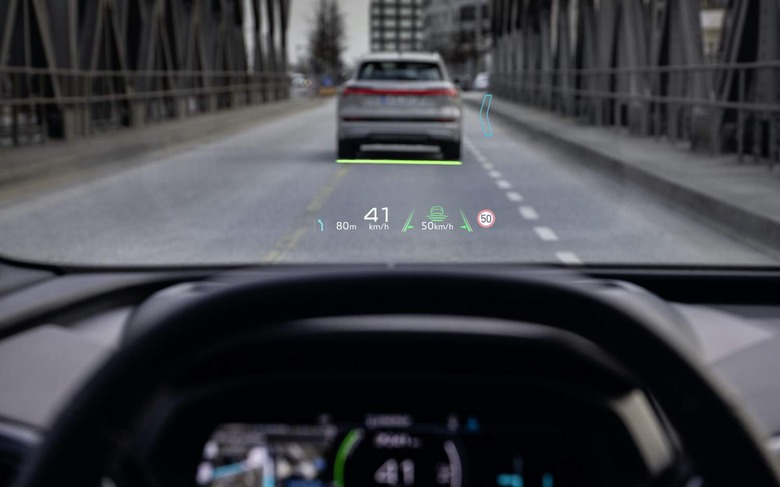
Audi may not be talking price yet, but it has revealed what those inside the Q4 e-tron will be surrounded with – and what the driver will see when they look out the windshield. The augmented reality head-up display, which will be optional not standard on the EV, builds on existing Audi HUDs by splitting the interface into two. Audi calls those the status section and the AR section.
The status section shows metrics like speed, traffic signs, navigation symbols, and other core information. It's designed to appear to float around 9.8 feet ahead of the driver, at which point it resembles roughly a 70-inch display.
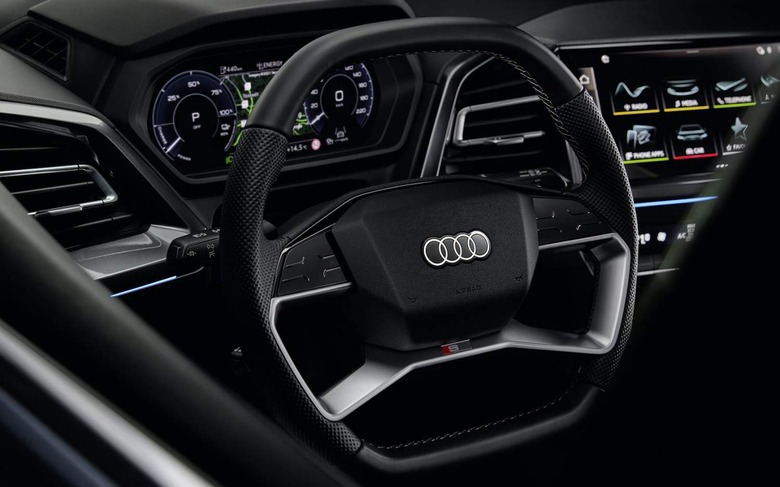
What's new is the AR section. That sits further out in the field of view, around 33 feet away from the driver, and is used to superimpose graphics on other traffic and other objects ahead of the car. It can be used to highlight potential hazards and more.
For navigation, Audi compares it to a drone flying ahead with instructions. A floating arrow shows the upcoming turn, and can animate to steer you visually around a corner. It can also apply extra highlights to things like road markings, including when the adaptive cruise assist system – which maintains pace with traffic ahead, and holds the Q4 e-tron in its lane – is active, to highlight what it's doing.
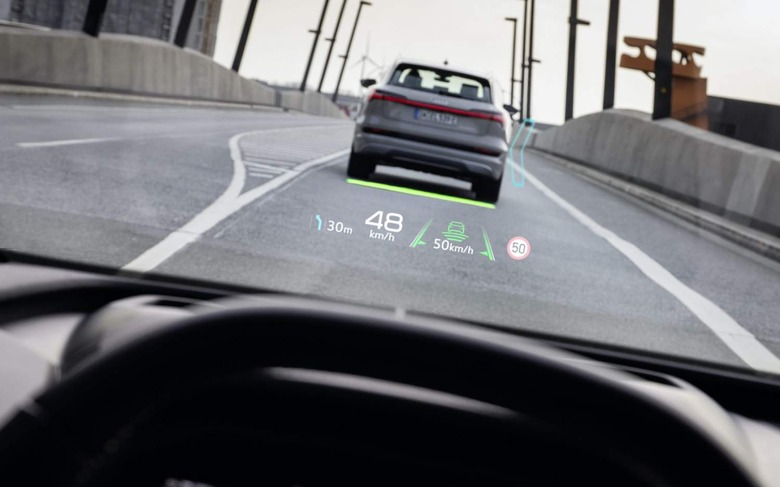
To make it all work, Audi used a new picture generation unit (PGU). It's embedded in the dashboard as with a normal HUD, but uses two level mirrors to individually reflect elements shown on a bright LCD, splitting it into the two sections. They're beamed onto a concave mirror, which can be adjusted to move the HUD in the driver's field of view, and then reflected onto the windshield.
The AR Creator, meanwhile, has been added to the MIB 3 infotainment system, and renders graphics at 60 fps. It also uses data from the GPS, and the front camera and radar sensor, to calculate where to position the augmented reality components in relation to the real world. It also includes "shake compensation" so that bumps and potholes in the road surface don't lead to the AR wobbling, and potentially making a driver feel sick.
It's not the first AR HUD we've seen – Mercedes offers a similar system on the latest S-Class, for example – but given the price positioning we're expecting for the Q4 e-tron it could be the most attainable version of the technology so far. We'll know more when Audi details the EV SUV in full later this year.


